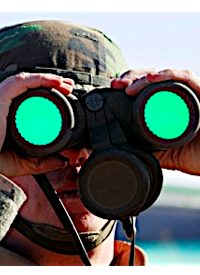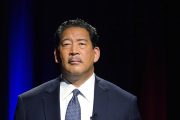
The main concern of the committee members is that the troops will leave before the Border Patrol has beefed up its manpower to continue the titanic struggle against the drug gangs that virtually control the border.
At 21,000 agents, the Border Patrol says, it has more manpower than ever.
The guardsmen are to leave on June 30.
Troops Deployed
Obama deployed the guardsmen in March 2010 to enhance border security, particularly against the increasing flow of drugs. The Republican committee cohort, led by Rep. Pete King, chairman of the Homeland Security Committee, believe the guardsmen have done good work and worry about permitting to leave too soon
According to the Department of Homeland Security, National Guard soldiers have assisted civilian law enforcement in seizing over 14,000 pounds of drugs and apprehending 7,000 illegal immigrants. However, we remain concerned that these 1,200 Guardsmen and women will stand down before a sufficient number of Border Patrol agents have been hired and trained to replace these soldiers. We believe that this would put at risk the valuable gains that have been made in many areas along the border at a time of increasing violence which threatens to spillover to our nation’s border communities.
The committee’s move comes just a week or so after Homeland Security Secretary Janet Napolitano, speaking at leftist think tank, averred that the border was not out of control.
A review of the evidence shows that the committee’s concerns about the border are well-founded and that Napolitano is wrong. Last week, GAO border expert Richard Stana told the Senate Homeland Security Committee that the Border Patrol can stop illegal entries into the United States on only 129 miles of the border. On another 744 miles, the agency apprehends illegal aliens only after they have crossed. Testified Stana:
As we previously observed in December 2010 and February 2011, and through selected updates, Border Patrol determined in fiscal year 2010 that border security was not at an acceptable level of control for 1,120 southwest border miles and 3,918 northern border miles, and that on the northern border there was a significant or high degree of reliance on enforcement support from outside the border zones for detection and apprehension of cross-border illegal activity. For two-thirds of these southwest miles, Border Patrol reported that the probability of detecting illegal activity was high; however, the ability to respond was defined by accessibility to the area or availability of resources. One-fourth of these northern border miles were also reported at this level. The remaining southwest and northern border miles were reported at levels where lack of resources or infrastructure inhibited detection or interdiction of cross-border illegal activity.
Border Violence
Violence at the border has reached a frightening level. Border Patrol agent Brian Terry was killed in a shoot-out in near Nogales, Arizona.
Ciudad de Juarez , across the border from El Paso, may be the most dangerous city in the world. More than 3,000 were killed in in drug violence there in 2010 alone. Between January 2008 and July 2010 the drug wars claimed 6,000 lives.
On February 10-11, a 24-hour gunbattle left 18 dead. In Sept. 2010, border agents came under fire near San Antonio, Texas, while chasing a truck along the Rio Grande River.
And border authorities frequently find tunnels running under the border.
Just months ago, Immigration and Customs Enforcement Agents waylaid a truck departing a putative toilet paper warehouse in Otay Mesa, Calif. The truck carried 10 tons of marijuana, and on raiding the warehouse, agents confiscated another 32,000 pounds.
Then they found an 1,800-foot tunnel running to Mexico equipped with tracks and pulleys.
Photo of National Guardsman near border: AP Images


